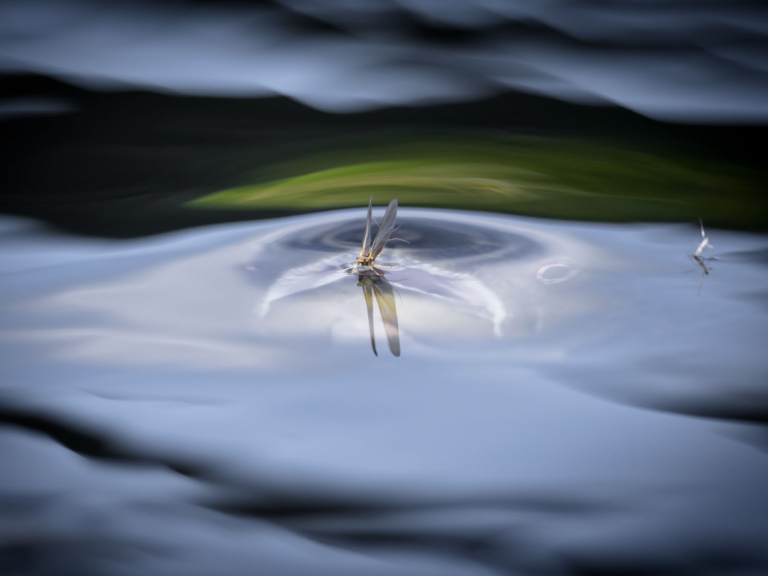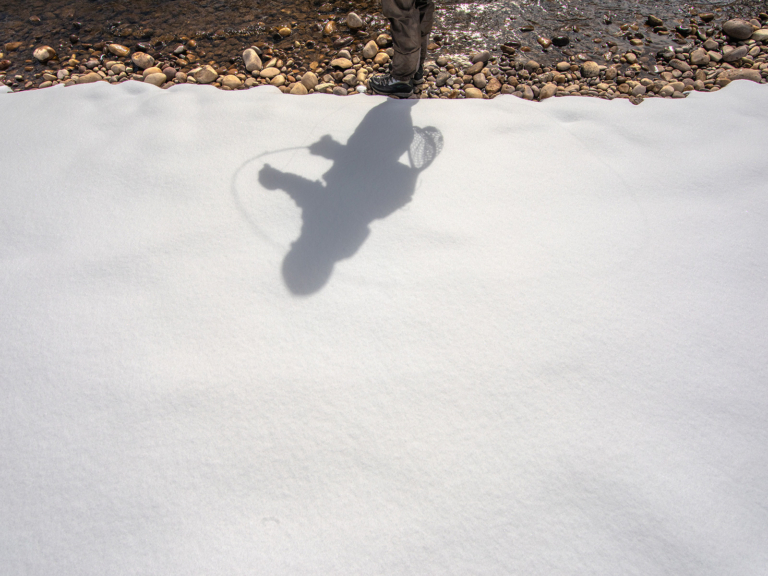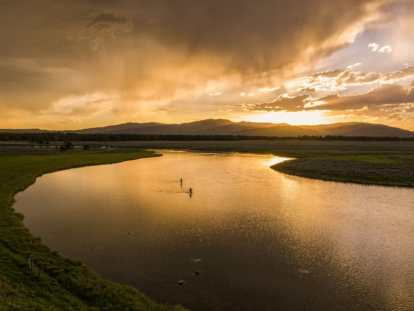The Art of Letting Go
Updating catch and release.
As a seasoned angler whose adult life has revolved around fly fishing, I’ve witnessed our sport go through significant changes in materials, equipment and techniques. More than anything, the game has gotten easier over the years. Where we once had to learn to cast a fly rod, we now have products and techniques that limit the need for actual casting—the sport’s beautiful and defining skill. Now, it seems, we’re drifting away from what attracted us to fishing with flies in the first place: the challenge.
We’ve sacrificed the need to cast a fly rod and learn to fish with abbreviated ways to catch them. Granted, the object of fly fishing always has and will continue to be to catch fish. Yet these days, we are catching more than our fair share. Technology, techniques and an industry focused on attracting more participants have accepted shortcuts with little regard for the ramifications.
It’s a troubling conundrum. Our fishing skills diminish, yet we catch and show off more fish. At the same time, we’ve done little to recognize the impact of maximizing successes or to teach proper fish-release skills to protect fish—or even the value of those practices. Given the state of our fisheries and the growing number of new anglers, these should be priorities. I’ve had concerns about this for decades, and after another record year of heat, low water, river closures and declining runs, my concerns are even more so now.
Taking stock of the waters I’ve come to treasure, I decided the most immediate effect I could have was simply limiting the number of fish I caught. With my roots firmly planted in trout fishing, I settled on a daily catch-and-release limit of eight. Why eight? When I first arrived in Utah, the general fishing regulations for trout allowed anglers to keep eight fish. At the time, that seemed reasonable yet challenging, given that I had been obsessed with catching fish.
On many of the waters I frequent, my interaction with a fish may not be the only one it will have that day—or even that hour. I choose my times carefully, factor in the weather and often do more prospecting than casting a fly. In most instances, I carefully select a fish to target.
In addition to limiting the number of fish I’ll catch, I have also confined my practices to a single technique. Since I’ve always been fascinated with hatches and the fact that a trout will rise to take a well-presented fly, I settled on fishing with dry flies even though I’m well aware that trout predominantly feed on subsurface insects and other more easily ingested aquatic edibles. That means even on the best days, my chances are limited. And, since I like to catch fish as much as the next person, the challenges in my path come into sharp focus. To succeed, I’ve needed to hone my skills and better understand the fish I pursue and the environment we both depend on.
On some outings, I leave the water fishless. Fine. I’ve grown accustomed to those outcomes. There are days where I don’t make a single cast. These are not fruitless hours or wasted occasions. They create opportunities for learning and time for observation and hunting. Eventually, when I’m successful, they are some of my more gratifying and memorable moments.
In applying this restraint, I’ve been gifted with a renewed intensity for fishing, the growth of my skills and the enjoyment that I started to lose before limiting my encounters. I now spend more time studying the fish, their movements and habits. It’s made me a better, more conscious angler. Due to my deliberate approach, I have a robust appreciation and respect for those few fish that take my fly. It’s a process that continues to evolve and grow every day I’m on the water.
I cut my teeth on Idaho’s Henry’s Fork back in the ‘70s. It’s a renowned spring creek whose fish will school the most seasoned angler. In the beginning, just hooking a fish was a reason for celebration. Landing one was a rare reward. Back then, and on this river, in particular, the regulars didn’t use a net. However, I realized that I could land more fish and do so quickly if I had one. To be honest, it was this selfish consideration that led me to finally purchase one. As the years passed and my concerns around fish and resource health grew, I understood what a helpful tool a net was for managing the fish I caught. Nets made it easier to release a fish with a minimal amount of handling and added stress to the fish.
That awareness was a beginning. Since then, I’ve continued to use tools and develop techniques and practices necessary to minimize my impact: utilizing barbless hooks, incorporating a Ketchum Release tool when fishing for trout, keeping fish wet, using a net and, as I said, simply handling far fewer fish. In this day and age, having the proper equipment and developing efficient release skills that limit handling, regardless of the fish one pursues, must be emphasized—especially given the significant growth in participants and the effects a warming planet has on our waters.
Even before today’s droughts and crowds, conservation played an integral role in my fishing life. It’s important because those rivers I walk and cast a fly upon create magical moments—and not all revolve around catching a fish. Fishing just happens to be the lure that attracts me to them. If you fish or simply marvel at the world’s waterways, I’d hope that you feel the same.
As a culture, we have persistently abused and often destroyed resources that add and support a meaningful quality of life. Fish and fishing are no exception. We need a new paradigm that acknowledges how the practices and techniques we use impact our resources. One in which catching a fish, and not every fish, becomes commonplace. And in doing so, we invest as much time and energy into understanding that impact, and the importance of minimizing it, as we do in developing the skills necessary to have success. Let’s be sure there will be fish to catch next time.

A beefy brown trout eyeballs just one more à la carte mayfly on Norway’s Suldalslågen river. Photo: Øystein Rossebø
From these growing concerns, conscientious anglers and industry groups are promoting a practice that would seem logical—simply keeping fish wet. A fish mortality study by R.A. Ferguson and B.L. Tufts considered the time a trout was held out of the water after being caught and supports such a practice. Their findings showed that fish released and kept in the water had a mortality rate of 12 percent. Fish lifted from the water for only 30 seconds had a 38 percent mortality rate. Seventy-two percent of the fish held out of water for a full minute died. Other factors contributing to fish mortality include how long a fish is played, angling methods and water temperature. Like all studies, this research has its flaws, yet it does demonstrate that holding fish out of the water can be harmful, if not lethal. How could it not? We all might want to reconsider what that selfie is worth. Just because we release most of the fish we catch doesn’t mean releasing a fish will guarantee survival. There are other factors to consider. How we handle a fish after it’s been caught is just one of them.
One entertaining and somewhat extreme way to limit encounters was practiced by renowned North Umpqua river keeper Lee Spencer. He only fished for steelhead after he had cut off the hook of his dry fly. He cared so much for these fish that he was content with a grab, a run or jump before the fly came free. On occasion, I’ve taken to this practice and look to do more of it in the future. You can continue to fish and enjoy the act of fishing, watching a fish rise to take a fly, feeling that first tug and, of course, the sense of accomplishment. Some days that’s all I need.
This isn’t the end. It’s a continuation of an angling journey that now needs to adapt and change to ensure the experience we’ve come to enjoy exists for generations to come. At the very least, selfishly, we should consider changing our approach, even if it means catching fewer fish and altering our practices. At this juncture, it seems a prudent consideration.
Catch and Release 2022
In the late 1930s, Lee Wulff dramatically altered the idea of what it means to be an angler. “Game fish,” he wrote, “are too valuable to be caught only once.” Behind this thunderbolt came the idea of “catch and release” recreational fishing. Facing declining wild fish stocks, the idea caught on; it’s been standard operating procedure ever since. Almost 100 years later, however, it’s time for an update. Here are the considerations and skills anglers must practice today as diligently as they do their casting.
Don’t fish when flows are too low or the water is too warm. For trout, temperatures above 65 degrees can be dangerous, and at 67 degrees or higher, your catch is much less likely to survive.
Wade fish instead of boat angling to limit encounters. Also, give fish safe feeding and resting areas. Swing flies for salmon and steelhead.
Only use barbless hooks. Master the use of a release tool, such as the Ketchum Release. Minimize air exposure and handling time. Keep fish wet and skip the selfie.
Land fish as quickly as possible. Appropriately used, nets can shorten a fight and safely secure unruly fish before release. Choose a net with a rubberized mesh bag, which helps keep the fish’s slime coat intact and won’t tangle in gills or fins.
Be mindful of the health of the run you’re fishing. If populations are hurting, put your rod away or use a hookless fly.
Wet your hands before touching fish. Keep fish away from dry surfaces like rocks, the bank and the drift boat. Never suspend fish from jaws or gills.

Steve Frogley chasing shadows (and trout) on a Utah stream. Photo: Andrew Burr

